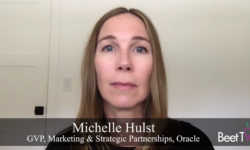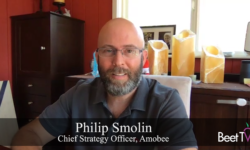In a world where viewers resent and recoil from advertising, how do broadcasters and publishers deliver results for advertisers anymore?
By working with, not against, prevailing audience behavior.
In this video interview with TransUnion’s head of media Matt Spiegel for Beet.TV, Hulu advertising VP Jeremy Helfand says more TV companies need to innovate in order to deliver experiences that delight, rather than turn off, modern viewers.
68% recall
Case in point – in 2018, Hulu launched a new ad format, “pause ads”, which show only when consumers actually pause a show. And, my, look how it’s grown…
“Hulu has over a billion ad-supported pauses a month,” Helfand says. “Our Pause ad demonstrated that at 68% increase in ad recall, which is about five X the benchmark.”
For Helfand, it’s about trying to go with the grain of consumer behavior, which, increasingly, appears resentful of interruptive advertising.
“TV has fundamentally changed,” he explains. “But, from an advertising perspective, TV advertising has not. It’s still the same largely disruptive formats that we’re seeing in TV today. (It) really breaks the storytelling experience in a way that really doesn’t need to be.”
Continual experience enhancement
In May, Hulu announced its first significant interface redesign since 2017, which had come alongside its live TV launch.
The company was aiming for simplicity and uniformity alongside the growing number of over-the-top TV services consumers also use.
It also announced a slate of new programming coming in June.
The moves came as Hulu continues offering a combined subscription bundle offering Hulu, Disney+ and ESPN+ for $12.99 a month.
https://techcrunch.com/2020/05/20/hulus-biggest-redesign-in-years-offers-a-more-standardized-experience-improved-navigation-and-discovery/
Viewer-first
Helfand thinks staying ahead of the game, changing up the old rules, can help the TV industry stay relevant.
“As an industry, we have to come together and acknowledge that there is a better way to do things,” he says.
“The bedrock of our strategy is what we call viewer-first advertising. It’s the idea that advertising should be more consistent, it should be more relevant, it should be more integrated.
“By doing that, you can deliver not only a better viewer experience, but you can also deliver a higher return on investment for the advertiser.
“Fifty percent of our content, our ad-supported sessions, are viewed in a binge mode, which is three or more episodes at a given time.”
Quest for relevance
Last year, Hulu announced it would institute a daily frequency cap of four ads per day, in addition to its hourly frequency cap of two ads per 60 minutes of content.
Helfand says, as it reduces the frequency of ads, a key challenge is to increase their relevance to viewers.
But he says he needs more signals than just demographic indicators to do that.
Helfand says the viewers environment, mindset, mood and the type of content will all play a role in the project.
This video is part of a series titled Navigating Accelerated Change, presented by Transunion. For more videos, please visit this page.








































